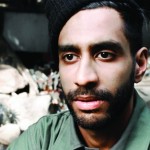The music of Pharrell Williams and the Neptunes was a huge part of the meaty “trying drugs and sex” part of my childhood. The main part of my teen years was in the early 2000s, a period generally considered to be past the prime of classic New York hip-hop and towards the end of regionalism in hip-hop (pre-Mims). I remember listening to “Grindin’,” the Clipse song he produced and sang on, when it came out, the nursery sing-songiness of it, and how white girls were singing along to a dude talking about selling cocaine.
The production duo insisted on featuring Virginia hometown talent like Roscoe P. Coldchain, who would not-rhyme in an offbeat monotone for minutes a time. They also made a Britney Spears song. The Neptunes did what they wanted, with who they wanted, they introduced new sounds and silences to the rap music production lexicon and for a time, they ruled the world. Pharrell’s new autobiography is not about that.
The book, Pharrell Williams: Spaces and Places I’ve Been is mostly a series of interviews between rappers, composers, an astronaut, assorted iconoclasts, and Pharrell himself. The interviews are broken up by live concert photos, staged press shots, pictures of objects designed by Pharrell with collaborators, logos, Japanese-style lookbooks, and lots of sneakers. If you have less than a massive interest in the life and art of Pharrell Williams, do not read.
The interviews vary widely in the types of people Pharrell speaks with, but rarely in their lack of focus or failure to illuminate the topics at hand. The interview with his partner in the Billionaire Boys Club clothing line Jay-Z tries to come across as two old friends having a conversation about the music business and life, but it sounds more like two old men forced onto a music industry panel. There are rambling recollections of Biggie lyrics, cliché-laden chatter about grunge replacing hair metal in the ’90s, vaguely “Eastern” notions of rhythm and “cyclical terms.” The conversation approaches a mild level of interesting when Jay-Z explains why he thinks ’90s hip-hop reigns supreme over possible contender late ’80s rap, but then devolves into talk of “impact” and “dominant force” nothingness. It feels like they shut off the tape recorder and started talking about what restaurants they enjoy the most.
The closest we get to a history and explanation of Pharrell’s music and rise to fame is in an interview with his N.E.R.D. bandmates Shae Haley and Chad Hugo by Loic Villepontoux, a brand director at Billionaire Boys Club/Ice Cream. Neptunes co-producer Hugo relates a murky story of forcing a reclusive Shae out of his house, saying, “achieving and maintaining friendship, in itself, was like artistry. What better way to do it but to make an album and play it.” More insight like this would be appreciated (along with more slightly awkward band photos circa 2000). Yet the next interview is a somewhat heady chat with Hans Zimmer about soundtrack composition, albeit with Zimmer’s description of “cello glissandi” sparking Williams’ sudden memory of hearing “Shook Ones” by Mobb Deep for the first time.
The interview with the Japanese founder of the clothing line A Bathing Ape and BBC/Ice Cream co-creator Nigo is fruitless, and does little but skim the surface about their relationship and motivations. Nigo actually says, “When I first went to Pharrell’s house I was astonished when I checked out his closet — we had so many of the same things.” Sounds like two rich kids on a playdate.
In fact, a massive part of the book is dedicated to Billionare Boy’s Club/Ice Cream. There are spreads and photographs of various global incarnations of the BBC/Ice Cream store, store interiors and layouts, and about halfway through the book, a full 16-page spread of selections from various seasons of BBC/Ice Cream clothing dating back to 2004. That comes after a lengthy and somewhat disjointed interview with none other than Buzz Aldrin, who, amidst semi-technical talk about Mars colonization and extraterrestrial life, mentions having recorded a song “Rocket Song” with Snoop Dogg and Talib Kweli. The sheer strangeness of it makes it one of the best exchanges in the book, although images of the universe taken from the Hubble telescope juxtaposed with “space-themed” interiors of Pharrell’s clothing store are an astronomical letdown. I guess we’re supposed to consider the Creator’s handiwork and on the next page glimpse how it inspired the wallpaper behind some ugly skate shoe.
Pharrell seems genuinely interested in inviting the reader into his world, to share in his wide-ranging interests and preoccupations. At times it seems like his own logbook, just a place for him to keep track of the things he’s made and the people’s he’s met, and it offers little insight into why he made certain choices or the specific motivations behind his work, musical or otherwise. Still, Spaces and Places I’ve Been never comes across as a Kanye West-level exercise in megalomania and narcissism.
And yet the best interview in the book is, strangely enough, with Kanye West. Pharrell happily directs Kanye’s manic energy into interesting places, going beyond a polite little chat into an engaging, bipolar Kanye rant about future music and film projects, moguls and even synesthesia. The conversation sheds some light on the process behind the creativity, something which happens far too little in this book. I’m holding my breath for the Roscoe P. Coldchain autobiography.



